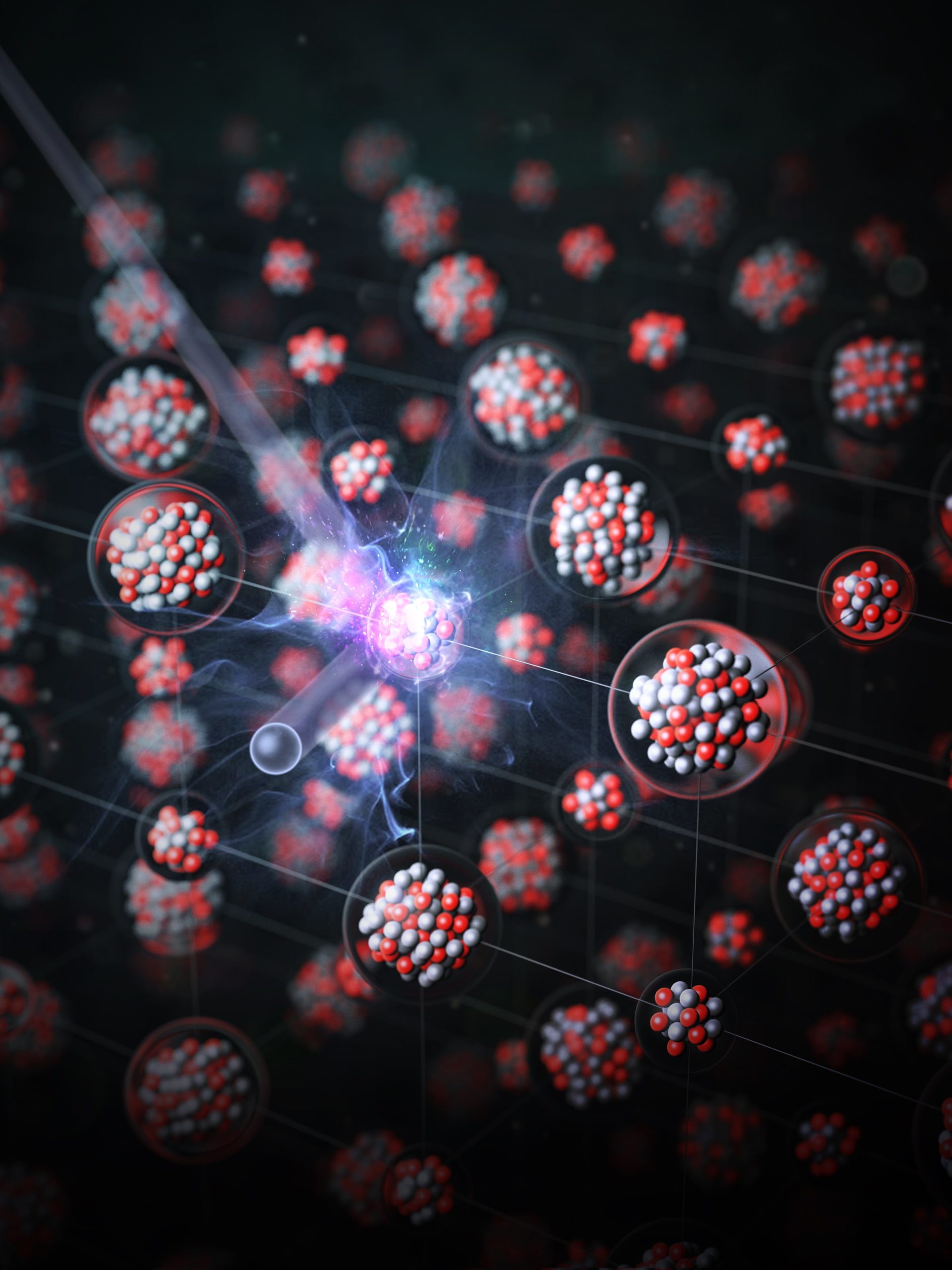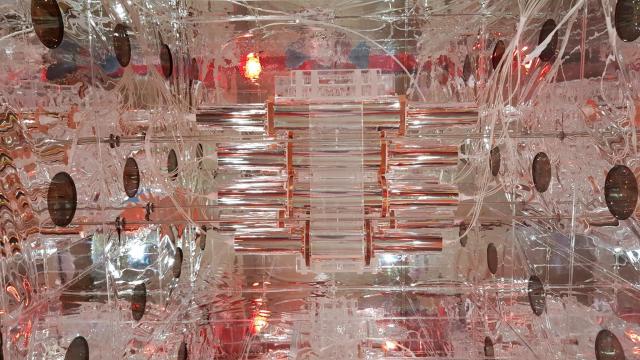Physicists have been trying for several years to double-check a signal from an experiment buried in an Italian mountain — a signal that looked an awful lot like a dark matter suspect known as a WIMP. Previous attempts to see that signal with other projects had fallen flat, and now, the experiment most similar to the original one has published its results: It, too, found nothing.
No one knows what dark matter is — it’s a placeholder term used to describe the invisible stuff we can only detect via its gravity — but one candidate to explain dark matter is called WIMPs, or Weakly Interacting Massive Particles. The idea is that some subatomic particles do have mass but interact so weakly with ordinary matter that we’ve yet to detect them. People mostly search for WIMPs by putting extremely sensitive detectors deep in the ground, where they are shielded from many of the influences that might produce misleading signals.
The experiment that purportedly detected a WIMP signal in 2017 is the DAMA/LIBRA experiment. DAMA/LIBRA uses sodium iodide crystals as targets for dark matter; the idea is that if dark matter passes through the crystals, they’ll get excited and become a little brighter. Other experiments that search for WIMPs by other means, like the XENON1T in Italy and XMASS-I in Japan, have not been able to find the signal that DAMA/LIBRA is seeing.

Enter the COSINE-100 experiment, which is based in a laboratory 701.04 m underground in South Korea. COSINE-100 uses over 91 kg of the same sodium iodide target, making it a good mimic of DAMA/LIBRA. COSINE-100 has been looking for a WIMP signal since 2016. Its first search turned up zilch. Its next search, the results of which are published today in Science Advances, ran from October 2016 through July 2018. The COSINE-100 team reported that they found just as little as they did last time, which could mean the end of the road for the controversial DAMA/LIBRA results.
“Our team found that what DAMA observed could not be the dark matter under most basic assumptions of how we think WIMPs should interact with ordinary matter,” Reina Maruyama, a physicist at Yale University and a co-author of the recent paper, told Gizmodo in an email. “We have not yet strongly tested DAMA’s observation of annual modulation, which DAMA argues is due to dark matter. That is our next focus.”
DAMA/LIBRA uses a different approach to try to detect dark matter than most experiments. While other setups either look for dark matter particles by colliding known particles or looking for a background signal, DAMA/LIBRA has observed the regular modulation of some unexplained signal that Earth has received in different amounts, depending on how it’s oriented, since the experiment began operation in 2003. Other projects have failed to see the same signal, which is in the X-ray band of the electromagnetic spectrum. But, perhaps due to the way the experiment manages its noise, as reported by Ethan Siegel in Forbes, the DAMA/LIBRA folks may have been seeing a signal where there wasn’t one to begin with.
The COSINE-100 paper “does not change at all the dark matter investigation,” said DAMA/LIBRA spokesperson Rita Bernabei, a physicist at Italy’s National Institute for Nuclear Physics and the University of Rome Tor Vergata. “Considering that so many models are possible about related astrophysical, nuclear and particle physics aspects and the many existing uncertainties on related parameters and assumptions, a serious comparison is quite a complicated and uncertain job both from experimental and theoretical points.”
Bernabei emphasised that the two detectors are not the same and that the COSINE-100 team’s method can produce “large uncertainties and biases.”
“Although our results do not favour the dark matter interpretation of DAMA assuming the most widely used dark matter model, we could not say DAMA is nothing,” said Hyun Su Lee, a co-author of the recent paper and a physicist at the Centre for Underground Physics at the Institute for Basic Science in South Korea, in an email to Gizmodo. In other words, DAMA has some sort of signal, but COSINE-100 results suggest it was not dark matter.

Some physicists, like Dan Hooper at the University of Chicago, do feel that the newer experiment has done a good job of showing that the DAMA/LIBRA experiment is not the way we’ll find WIMPs, if they exist.
“My view is that over the past 10 to 15 years, it has steadily become more and more difficult to think that the signal being reported by the DAMA collaboration was really the consequence of dark matter particles. One after the other, experiments came out with results that failed to confirm the claims of DAMA,” Hooper said in an email. “Most of the physicists I know (including myself) essentially gave up on this possibility years ago.”
“That being said, we all agreed that it would be most convincing if an experiment could be carried out that used exactly the same kind of target material that DAMA used,” Hooper added. “The COSINE experiment is precisely that, and the fact that they did not see anything is really a big nail in the coffin of dark matter interpretations of DAMA. I still don’t know what it is that DAMA is seeing — maybe it’s some weird background, or just some mistake they’ve somehow made. But whatever is going on, it doesn’t seem to have anything to do with dark matter.”
WIMPs have been losing steam as the forerunning dark matter candidate. Axions — much smaller particles — have become a hotter topic in recent years, and even huge objects like primordial black holes remain a hypothesis in some circles. No one has been able to certify any direct detections of dark matter yet, but plenty of experiments are looking in different spaces.
“I am excited to see what we find with the large WIMP experiments like XENONnT, LZ, and SuperCDMS,” Maruyama said. “I also find axions compelling and am excited to be working on HAYSTAC and its extensions. With COSINE, we can continue to search for WIMPs and of course, the next steps are to carry out the ultimate test of DAMA — annual modulations.” The annual modulations are that weird signal itself, which ebbs and flows over the course of each year. Just because it’s not dark matter doesn’t mean it’s not intriguing.
In physics, finding nothing can be just as enlightening as finding something; in the case of dark matter, it can tell scientists that they need to look elsewhere.
More: If We Live in a Sea of Dark Matter, This Tiny Mirror Might Be Able to Detect It
